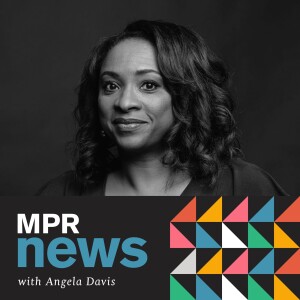
Soul doctors: How Minnesota chaplains’ roles are changing
 2024-01-24
2024-01-24
Chaplains often show up on the worst days of people’s lives. They arrive in a hospital room after a distressing diagnosis. They accompany police to help inform someone of a loved one’s death.
One in four Americans have been visited by a chaplain, usually at a hospital or hospice, though chaplains also work in prisons, on college campuses and with the military and police and fire departments.
But the role of spiritual caregiver is evolving as society becomes both less religious and more religiously diverse.
At the end of last year, Fairview Health Services laid off more than a dozen staff chaplains as part of a larger round of layoffs, raising questions about whether patients’ spiritual care will continue to be seen as part of a health system’s core services.
MPR News host Angela Davis talks with three chaplains about the work they do and how it’s changing.
Guests:
The Rev. Jessica Chapman Lape is an assistant professor of Interreligious Chaplaincy and director of the Interreligious Chaplaincy Program at United Theological Seminary of the Twin Cities. She’s an ordained minister in the United Church of Christ, a staff chaplain at Regions Hospital in St. Paul and a community trained birth doula.
The Rev. Michael Le Buhn manages the spiritual care department at Abbott Northwestern Hospital. He previously worked as a chaplain in Allina Health’s Mercy Hospital Unity Campus in Fridley and at Open Table Nashville, a nonprofit that serves people experiencing homelessness. Michael is a veteran of the United States Army.
Rabbi Lynn Liberman is the community chaplain with Jewish Family Service of St. Paul. She has worked in a congregation, as a hospice and hospital chaplain and is a volunteer police and fire chaplain for Mendota Heights and West St. Paul. She also provides chaplain care for the Minnesota State Patrol sworn troopers and security officers who work at the Minnesota State Capitol.
Subscribe to the MPR News with Angela Davis podcast on: Apple Podcasts, Google Podcasts, Spotify or RSS.
Use the audio player above to listen to the full conversation.
More Episodes
 2024-09-27
2024-09-27
 2024-09-25
2024-09-25
 2024-09-23
2024-09-23
 2024-09-09
2024-09-09
 2024-09-04
2024-09-04
 2024-09-03
2024-09-03
 2024-08-30
2024-08-30
Create your
podcast in
minutes
- Full-featured podcast site
- Unlimited storage and bandwidth
- Comprehensive podcast stats
- Distribute to Apple Podcasts, Spotify, and more
- Make money with your podcast
It is Free
- Privacy Policy
- Cookie Policy
- Terms of Use
- Consent Preferences
- Copyright © 2015-2024 Podbean.com




